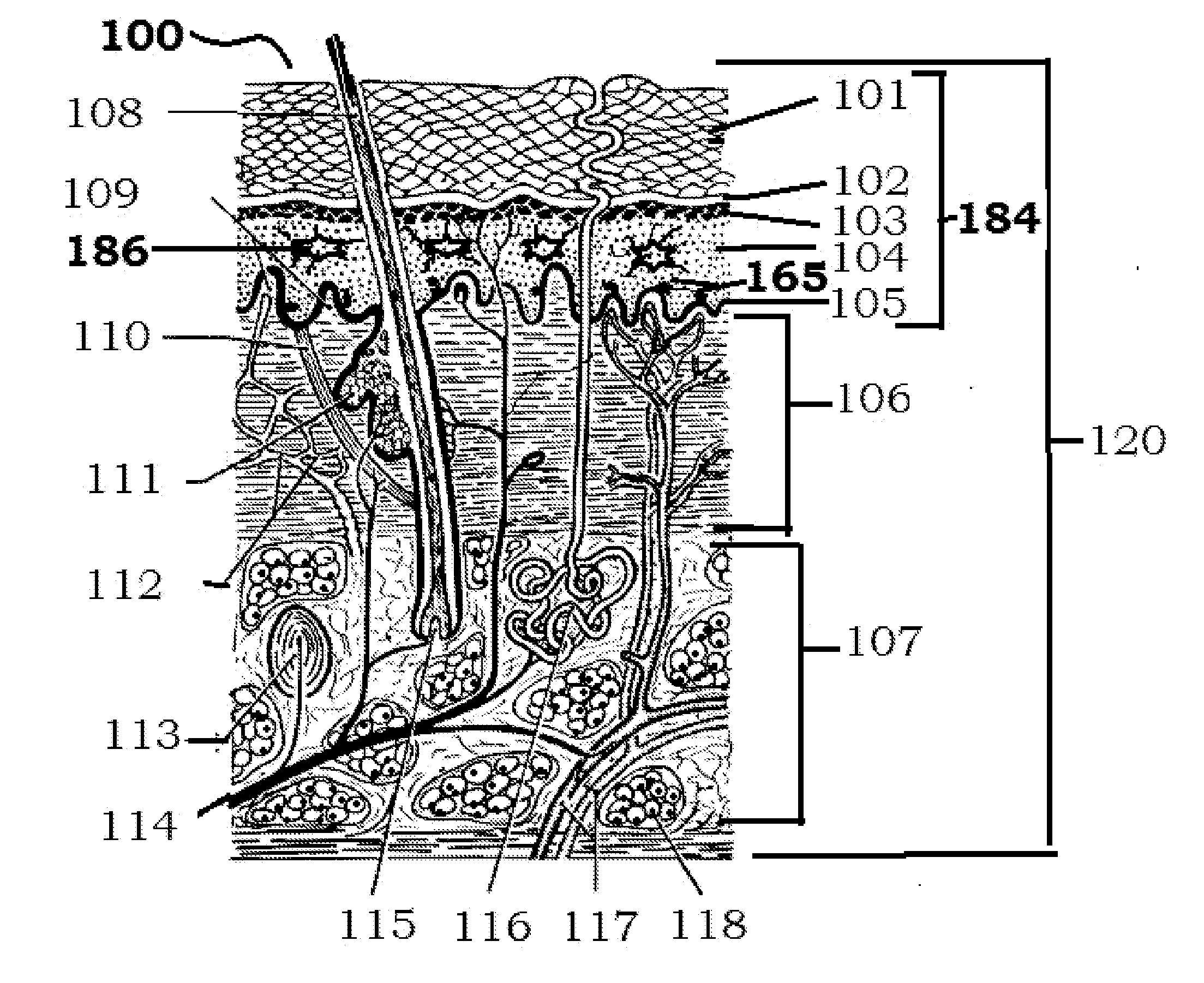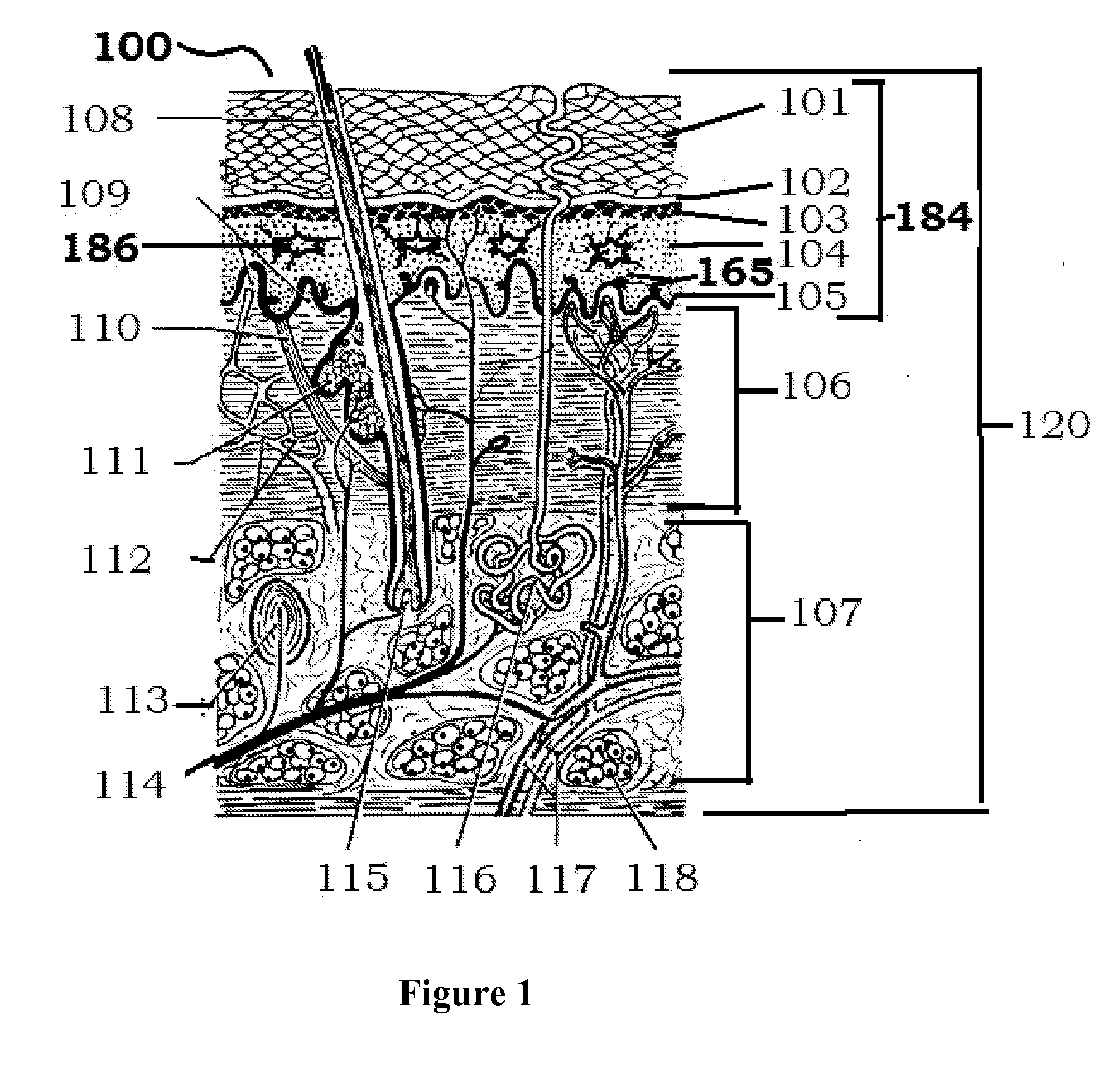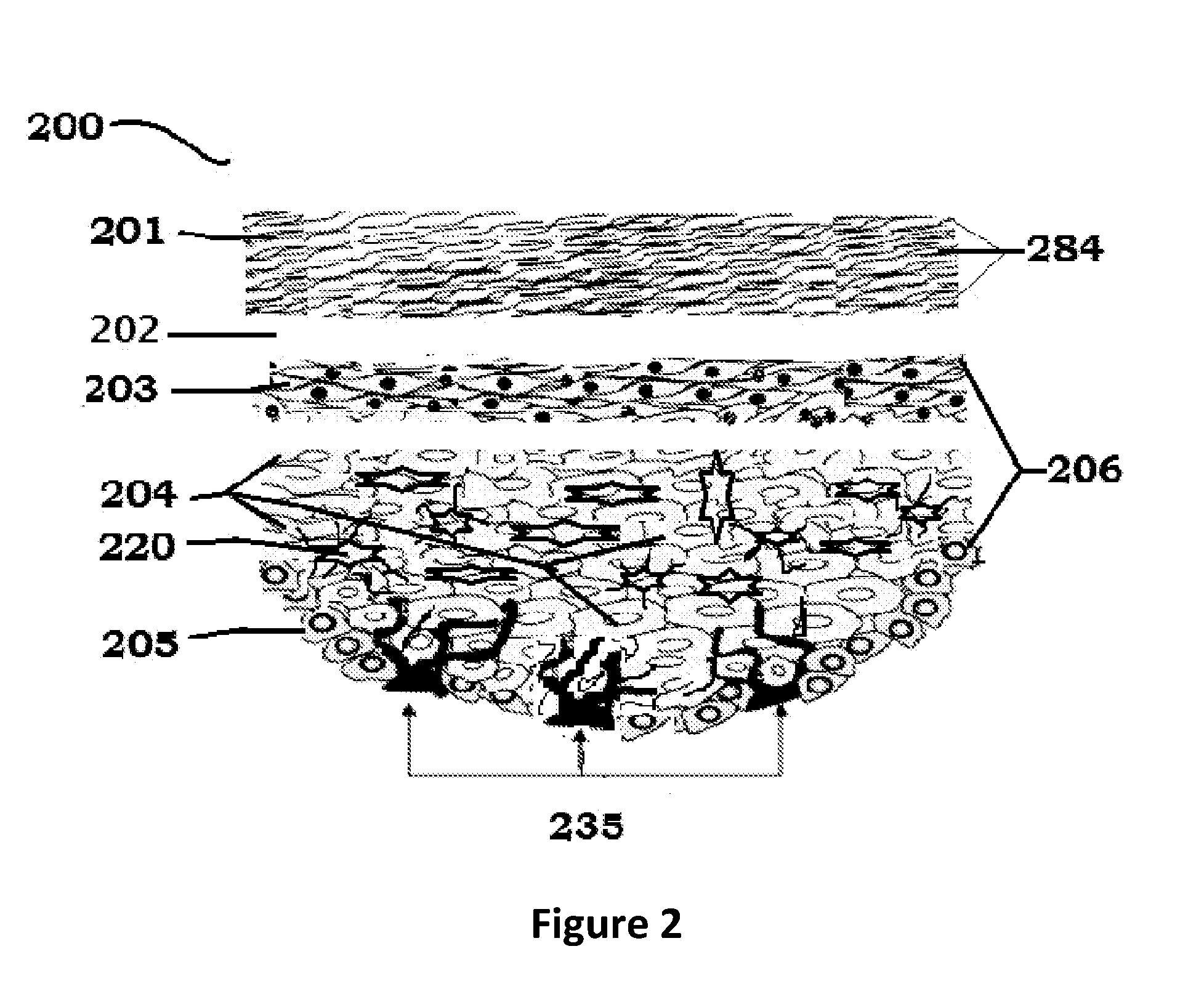Method of long lasting human skin tanning
a human skin and tanning technology, applied in the field of human skin tanning long-lasting, can solve the problems of skin damage, skin cancer, and higher risk of skin cancer, and achieve the effects of long-lasting tanning, long-lasting tanning, and long-lasting tanning
- Summary
- Abstract
- Description
- Claims
- Application Information
AI Technical Summary
Benefits of technology
Problems solved by technology
Method used
Image
Examples
Embodiment Construction
[0089]FIG. 1 is the diagram of skin 100 showing epidermis, dermis, superficial fascia, and deep fascia and the cellular layers which are involved in tanning methods. It shows Epidermis 184 made up of stratum corneum 101, stratum lucidum 102, stratum granulosum 103, germinative (stratum spinosum, spinous layer) layer 104 containing Langerhans dendritic cells 186 (located between stratum granulosum 103 and stratum basale 105), Basal layer of columnar cells 105 and melanin producing melanocytes 165, Dermis or Corium 106 with various components, Superficial fascia 107, Hair 108, Dermal Papillae 109, Arrector Pili smooth muscle 110, Sebaceous gland 111, Lymphatic plexus 112, Pacinian corpuscle 113, Nerves 114, Papilla of the hair 115, Sweat gland 116, Blood vessels 117, Fat in the subcutaneous tissue 118, Epidermis 184, Epidermis, Dermis, and subcutaneous tissue (superficial fascia) 120 situated on the deep fascia covering the muscles below it (modified from Grant).
[0090]Sunless tanning ...
PUM
| Property | Measurement | Unit |
|---|---|---|
| wavelength | aaaaa | aaaaa |
| wavelength | aaaaa | aaaaa |
| weight | aaaaa | aaaaa |
Abstract
Description
Claims
Application Information
 Login to View More
Login to View More - R&D
- Intellectual Property
- Life Sciences
- Materials
- Tech Scout
- Unparalleled Data Quality
- Higher Quality Content
- 60% Fewer Hallucinations
Browse by: Latest US Patents, China's latest patents, Technical Efficacy Thesaurus, Application Domain, Technology Topic, Popular Technical Reports.
© 2025 PatSnap. All rights reserved.Legal|Privacy policy|Modern Slavery Act Transparency Statement|Sitemap|About US| Contact US: help@patsnap.com



